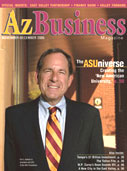Note: All fields are required.
from our blog
February 10, 2021
Seatback Failures
Front occupant seatbacks play a vital safety role in rear-end crashes, similar to the purpose of airbags and seatbelts in frontal impacts. In a rear impact, a front seat should be designed to absorb energy and contain the occupant in the front seating space. Weak, defective front seats can fail, collapse and cause front occupants […]

Seatback Failures
Front occupant seatbacks play a vital safety role in rear-end crashes, similar to the purpose of airbags and seatbelts in frontal impacts. In a rear impact, a front seat should be designed to absorb energy and contain the occupant in the front seating space. Weak, defective front seats can fail, collapse and cause front occupants to catapult into the rear of the vehicle. This creates a dangerous hazard to both the front occupant and anyone in the rear seat behind the occupant.
There is a misconception that in a seatback failure the seat must “break.” Many times, a component part may break; however, it is common that a defective seat may not have any broken parts. The “failure” is the seating system’s failure to safely contain an occupant in the front occupant space. Weak seats may dynamically and rapidly yield rearward regardless of whether a part breaks.
The exact failure in a seatback is difficult to determine until the seat is detrimmed – the cushioning is removed to reveal the structure of the seat. Common failures include: rapid yielding which leads to collapse; recliner failure; seat track failure; failure of the bolts connecting the seat to the floor; a broken weld; an inadvertent latch; and a head restraint failure.
The “recliner” is the mechanism that adjusts the seatback. Some vehicles have single recliners although most newer cars utilize recliners on both sides of the seat (dual recliners). A recliner should provide sufficient rearward resistance in a rear impact. When a recliner fails, the seating system as a whole dangerously collapses.
An “inadvertent unlatching” failure is a design defect that leads the seat to disengage releasing the recliner mechanism result in a collapse of the seating system.
If the headrest is broken or pulled out in a rear-end impact, it should raise a red flag for a “head restraint” failure. The headrest should be designed in conjunction with the seatback to support the occupant and prevent the occupant from ramping. When the seat yields rearward and a front occupant loads the headrest, weak and defective head restraints may pull out or break. Another key piece of evidence is the head restraint “guide sleeves” – the plastic pieces at the top of the seatback where the head restraint prongs are inserted into the seatback. In a head restraint failure, the guide sleeves my break.
https://www.safetyresearch.net/blog/articles/nhtsa-ready-strengthen-seat-backs

quick links
9375 E. Shea Blvd.
Suite 100
Scottsdale, Arizona 85260
Telephone 480-874-2918
Facsimile 480-588-5063
Mailing Address:
Post Office Box 12877
Scottsdale, Arizona 85267





 Subscribe by Email
Subscribe by Email Shane Harward
Shane Harward Find us on Facebook
Find us on Facebook


